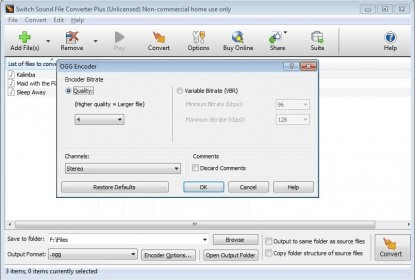
- REPLACE AUDIO FILE WITH ANOTHER MIXPAD HOW TO
- REPLACE AUDIO FILE WITH ANOTHER MIXPAD FULL VERSION
- REPLACE AUDIO FILE WITH ANOTHER MIXPAD INSTALL
So if you have several tracks of programmed drum beats, piano and string parts, it's a straightforward affair to save the MIDI file and re‑open it in another piece of software. MIDI files are read and written in the same way by every DAW, and by a good many hardware machines too.

Let's start by looking at MIDI file transfers, because that's the easiest element of any project to export.


If you're planning to transfer via the web instead, none of this matters, though there are some further considerations that I'll discuss later. If you're working with very large files, such as HD video, or audio projects in a single ZIP file, you'll need to use the latter approach, as FAT32 can't deal with single files over 4GB in size.
REPLACE AUDIO FILE WITH ANOTHER MIXPAD INSTALL
To get around this, you have two options, the first of which is to use a FAT32‑formatted drive (which is read/writable on both operating systems), and the second to install software (freebies are available) that enables your OS to read drives of the other format. Assuming you're not just switching between DAWs on the same machine, it's easy and inexpensive to use an external hard drive, and even USB pen drives are now typically large enough to hold a full project (just don't try to run the project directly from it!).īy default, Macs and PCs use different drive formats (NTFS on Windows HFS+ on a Mac) and without additional software, neither OS can write to the other's drives. Media Savvyīefore exporting a project, consider what media you plan to use for the transfer. That said, there are several areas of commonality, so it's always possible to transfer at least some data: all use a timeline, and offer multiple mono or stereo audio tracks they support plug‑in effects, processors and instruments they generate automation data, probably using MIDI, to control effects and virtual instruments the job of summing signals together on a bus is a simple mathematical process. Newer versions of a DAW may include additional functionality, and different plug‑ins from previous versions, as plug‑ins have been updated, or licensing deals with third‑party suppliers of older plug‑ins expire.

REPLACE AUDIO FILE WITH ANOTHER MIXPAD FULL VERSION
Why Aren't DAW Files Interchangeable?ĭAWs do pretty much the same job, but they all work slightly differently: they may use different plug‑in protocols (TDM and RTAS plug‑ins for Pro Tools, Audio Units, VST or even Direct X for others) they may offer different amounts of gain above unity and the implementation of audio and MIDI routing, of automation, VCA grouping, or the way they handle multi‑output virtual instruments or crossfades may also differ.Įven with different versions of the same DAW 'family', you may find that an 'LE' or 'lite' version can't open a project created in the 'full‑fat' product, simply because the full version includes functionality that's missing or disabled in others. It might not be an everyday need, but sooner or later most of us will wish we could do exactly this, with the minimum of pain and inconvenience - so let's explore the benefits, limitations and idiosyncrasies of the protocols and tools that aim to help you.
REPLACE AUDIO FILE WITH ANOTHER MIXPAD HOW TO
We're often asked how to transfer projects from one software DAW to another. Exporting a project from one DAW to another can be frustrating - but there are ways and means.


 0 kommentar(er)
0 kommentar(er)
